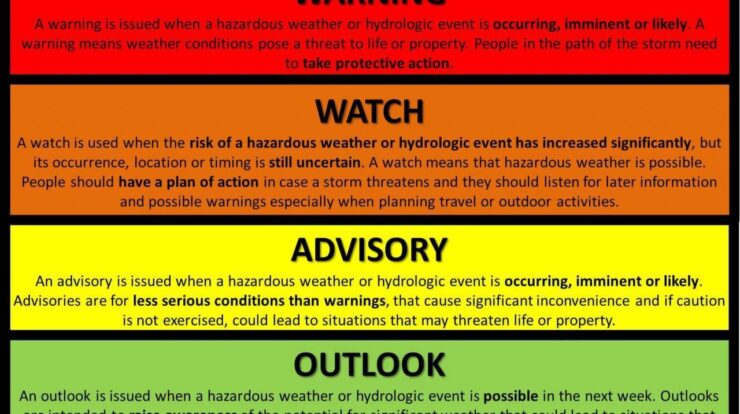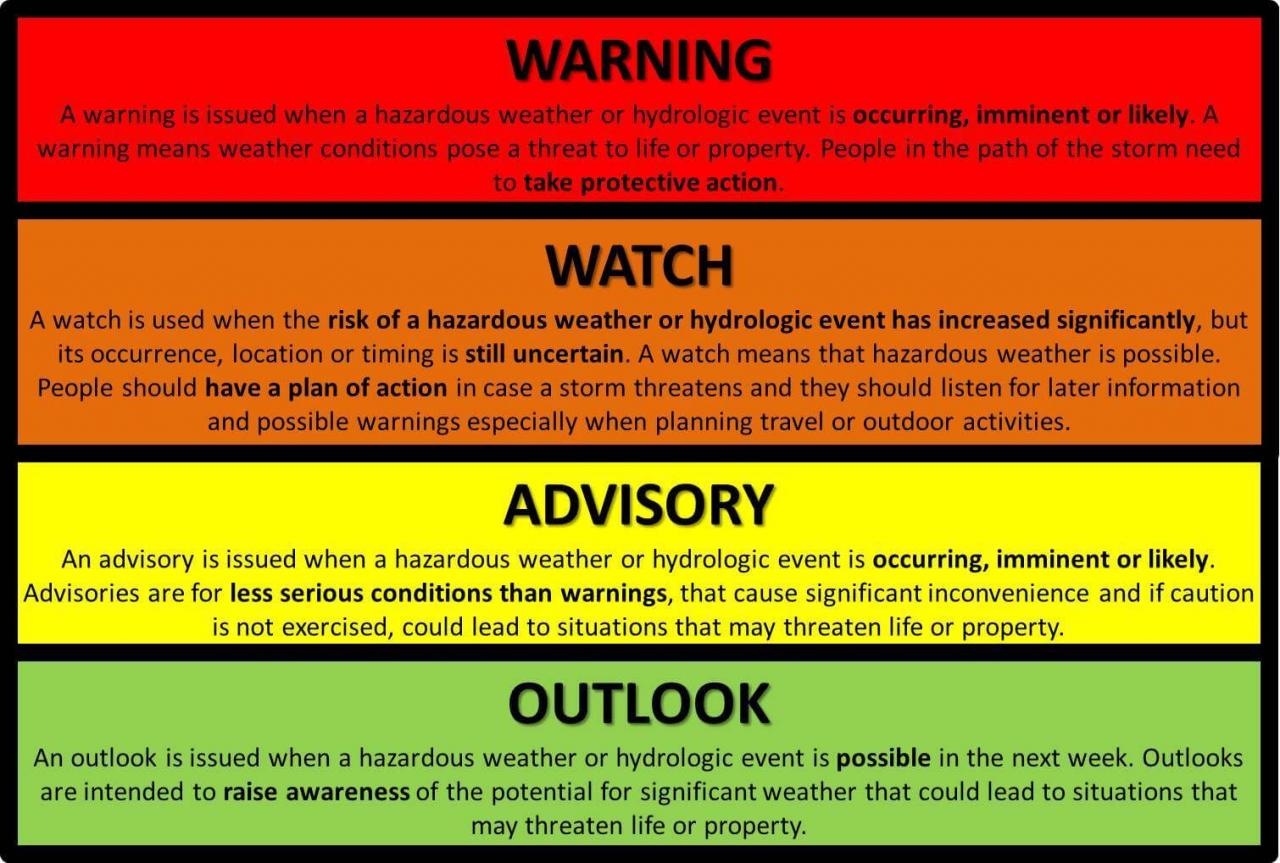
Is a watch or warning worse – As the age-old adage goes, “Forewarned is forearmed.” But when it comes to watches and warnings, which is worse: knowing that a potential hazard is approaching or being caught off guard? This article delves into the complexities of these two distinct alerts, exploring their definitions, purposes, issuance criteria, and impact on individuals and communities.
For those interested in the difference between watch and warning , it’s important to note that a watch is issued when conditions are favorable for a hazardous event, while a warning is issued when the event is imminent or already occurring.
Understanding these distinctions can help you prepare and respond appropriately.
From wildfires to hurricanes, watches and warnings play a crucial role in keeping us safe. But understanding the subtle differences between them can mean the difference between timely preparedness and dangerous complacency.
Definition of Watch and Warning
A watch is issued when conditions are favorable for severe weather to develop. A warning is issued when severe weather is imminent or occurring.
The difference between a watch and a warning is the level of certainty. A watch means that severe weather is possible, while a warning means that severe weather is expected.
When it comes to understanding the difference between watch and warning , it’s crucial to know the nuances. A watch indicates a potential hazard, while a warning signifies an imminent threat. Staying informed about these distinctions can help you make informed decisions during emergencies.
Examples of situations where a watch or warning would be issued include:
- A watch would be issued when there is a possibility of a tornado forming.
- A warning would be issued when a tornado has been spotted or is indicated by radar.
Purpose of a Watch and Warning

The purpose of issuing a watch or warning is to give people time to prepare for severe weather.
Watches and warnings help protect people and property by providing them with information they need to make decisions about their safety.
Issuance of a Watch and Warning

Watches and warnings are issued by the National Weather Service (NWS). The NWS uses a variety of tools to monitor weather conditions, including radar, satellites, and weather balloons.
The NWS issues watches and warnings based on the following criteria:
- The severity of the weather threat
- The likelihood of the weather threat occurring
- The amount of time people have to prepare for the weather threat
Impact of a Watch and Warning
Watches and warnings can have a significant impact on individuals and communities.
When a watch is issued, people should be aware of the potential for severe weather and take steps to prepare, such as gathering supplies and making an evacuation plan.
When a warning is issued, people should take immediate action to protect themselves, such as seeking shelter or evacuating the area.
Comparison of a Watch and Warning
The following table compares and contrasts the characteristics of a watch and a warning:
| Characteristic | Watch | Warning |
|---|---|---|
| Level of certainty | Possible | Expected |
| Action to be taken | Be aware of the potential for severe weather and take steps to prepare | Take immediate action to protect yourself |
| Example | A watch would be issued when there is a possibility of a tornado forming | A warning would be issued when a tornado has been spotted or is indicated by radar |
Closing Notes
Ultimately, both watches and warnings serve as vital tools in our collective effort to mitigate risk and protect life and property. By understanding their distinct characteristics and the criteria that govern their issuance, we can make informed decisions and take appropriate action when faced with potential hazards.
Want to stay informed about the latest news and weather updates? Learn how to watch Ion for real-time coverage. If you hear terms like “watch” and “warning” in weather forecasts, understanding the difference between watch and warning is crucial for your safety.
Stay prepared and know what actions to take when these alerts are issued. Whether you’re a movie buff or history enthusiast, don’t miss the upcoming film “Oppenheimer.” Discover how to watch Oppenheimer and witness the captivating story of the enigmatic scientist.
Whether it’s a watch or a warning, being prepared is the key to navigating the uncertainties of our ever-changing world.
Key Questions Answered: Is A Watch Or Warning Worse
What is the difference between a watch and a warning?
A watch indicates that conditions are favorable for a hazardous event to occur, while a warning means that the event is imminent or already happening.
If you’re curious about the how to watch ion , you’re not alone. It’s a common question, and the answer is surprisingly simple. You can also learn about the difference between watch and warning to stay informed during emergencies. Plus, don’t miss the highly anticipated film how to watch oppenheimer for a captivating cinematic experience.
When are watches and warnings issued?
Watches are typically issued when there is a potential threat, while warnings are issued when the threat is more immediate and severe.
What should I do when a watch or warning is issued?
When a watch is issued, monitor the situation and be prepared to take action. When a warning is issued, take immediate action to protect yourself and your property.





